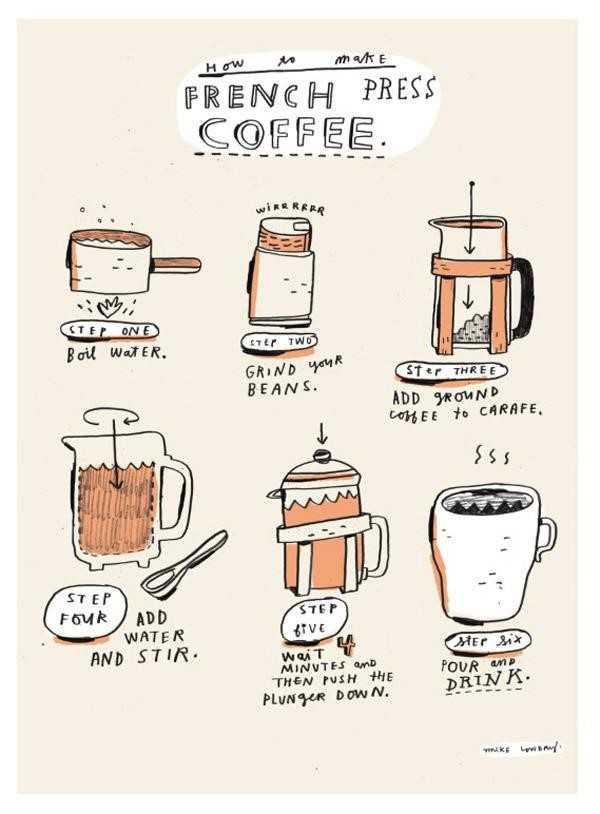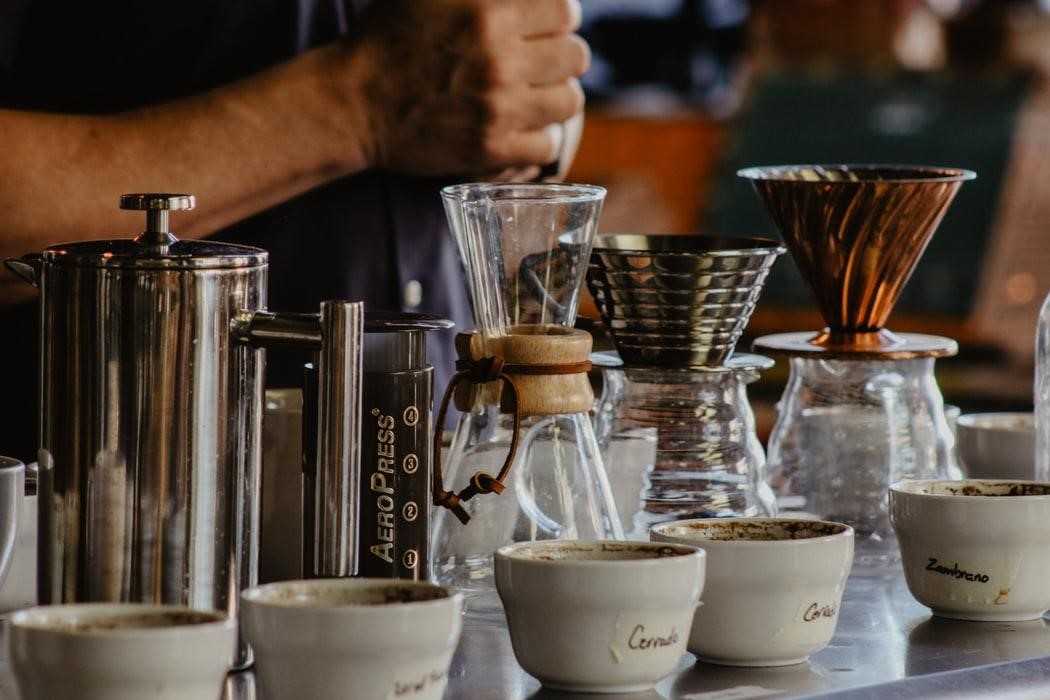MILAN – French Press or pour-over? In this article, Yurii Brown, Certified Barista and Founder of CoffeeGeekLab helps you decide which one is the better for you by analysing the advantages and disadvantages of each method. Trying to decide which brewing method would work for you? Don’t know what to buy, a French Press or a pour-over? Don’t worry, we got you covered. The first thing you should know about both these brewing methods is that they are manual.
Therefore, if you don’t want to do everything yourself (or perhaps your mornings tend to be quite hasty), you might want to consider an automatic coffee brewer. For instance, a good automatic pour-over machine can mimic the manual process with just a touch of a button. Such brewers free you of the need to worry about the proper water temperature and blooming the grounds. They do everything. If that sounds like something you might enjoy, you can check out the selection of the best automatic pour-over coffee makers on this page.
However, if you don’t mind making an effort for a flavorful cup of coffee, let’s take a closer look at two popular manual brewing methods: pour-over vs. French Press.
Now, pour-over is a dripping method, which means the hot water goes through the grounds (and the filter), and the extracted coffee drips down. A French press implies a steeping method, which means the grounds are soaked with water and are left to steep. Then, you use the plunger and the filter to keep the grounds out of your mug and pour your coffee. To brew a cup of pour-over coffee, you will require around 4 minutes. With a French press, you will need approximately 5 minutes. The difference isn’t that huge, right?
Of course, the equipment itself is rather different. For example, a pour-over would require filters (either paper or reusable ones, like metal mesh or cloth filters), which means extra expenses. A French Press comes with a mesh filter, so you won’t have to buy anything extra for it.
The coffee coarseness is slightly different too for each of these brewing methods. For a French press, you need coarse grounds. For a pour-over, a medium or a medium-coarse grind is recommended (it should have a sand texture, to give you a rough idea).
However, the main difference hides in the cup. These two brewing methods do not result in the same flavor, and that’s what sets them apart. With a French Press, you would get a bolder, richer cup of coffee. This method allows all the natural oils to get into your cup, so the result is velvety, with a heavier body and muted acidity. Many coffee lovers describe French Press coffee as “thick” and “creamy”. As for pour-over, it typically brews coffee that tastes cleaner, smoother, and lighter. With a pour-over brewing method, you will get a weaker cup of coffee than with a French press, but it will be clearer, allowing you to taste all the flavor notes and nuances. In terms of acidity, pour-over will taste a bit brighter, with pleasant (and not overpowering) acids.
Pour-Over vs. French Press: Advantages and Disadvantages
To help you make up your mind, let’s take a look at these two brewing methods side by side. What are their advantages, and what potential issues you might face with each of them? Which one would be suited for you, a French Press or a pour-over? Let’s find out.
Here are the main advantages of the French Press brewing method:
- It’s affordable, as French Press isn’t that expensive.
- It results in an insanely flavorful cup of coffee.
- You get a healthier cup of coffee, as the filter does not prevent the antioxidant-rich coffee oils from getting into your mug.
- You don’t have to waste paper (I mean the coffee filters).
- This method is quite simple and would work for all experience levels, including beginners.
- You can fully control your brew and experiment with various configurations (bean type, coarseness, steeping time, etc.).
- It is suited for the cold brew method as well.
- Comes in various sizes and allows users to brew from a single cup to around 4 mugs at a time.
And here are the disadvantages:
- Some of the grounds can get into your mug, ruining those last few sips.
- Might be too strong for some coffee lovers.
- Because the beverage ends up really bold, it overpowers the intricate coffee flavors and nuances.
- Cleaning can be finicky, as the mesh filter might become clogged occasionally.
Moving on to pour-over and the advantages of this method:
- Results in a cleaner flavor with noticeable subtle notes, so this brewing method would be ideal for passionate coffee connoisseurs who love experimenting with different flavors.
- Stops all (and I mean ALL) coffee grounds from getting into your cup if you use paper filters (and not the reusable mesh one).
- Gives you total control over your brew and allows for experiments.
- Cleaning a pour-over is much easier than cleaning a French Press, as you only need to throw the filter away and rinse the pour-over with water.
- Affordability is another plus, as pour-overs are usually reasonably priced (especially when compared to the popular drip coffee makers).
- It’s ideal for solo users, as most pour-over filters are designed to hold enough grounds for one cup.
- Many coffee enthusiasts describe this brewing process as “meditative”, which might be great for someone looking for a couple of minutes to themselves every day.
And now let’s take a look at the potential issues you may face:
- Higher cost. First of all, you will need coffee filters. Whether you are going to buy reusable or disposable ones, this means extra expenses. You might also have to buy a special kettle with a thin spout to ensure a precise water stream and an even saturation of the grounds.
- Requires a slight learning curve. Meaning, you will have to go through a couple of trials and errors to find a suitable coffee + water ratio for your ideal cup of joe.
- Takes longer than a French Press method, which might be an issue for someone who wants their coffee fast (or frequently find themselves being in a hurry).
How to Make Coffee Using a French Press
The process is quite simple:
- Heat up your water. The ideal brewing temperature is between 195 and 205 degrees Fahrenheit, so you might want to let the water cool down for a minute after it boils. And don’t forget that it’s better to use filtered water rather than tap.
- Add your coffee grounds. They should be rather coarse. The ratio would depend on your personal preferences, but you can start with around 15-20 grams of water for each gram of coffee.
- Pour in the hot water, steer the grounds, and let your beverage steep for around 4 minutes.
- Gently push the plunger down, get your favorite mug, and pour yourself a cup of hot, flavorful beverage. Enjoy!

How to Make Coffee Using a Pour-Over
This brewing method might take more time, but it’s worth it. Here’s what you need to do:
- Heat up the water (duh!).
- Get your coffee grounds, medium or medium-coarse. The recommended coffee-water ratio is 1:16, but you can try other configurations to find what works for you the best.
- Get your paper filter and rinse it with hot water. It will help prep the filter and also keep it sticking to the pour-over walls.
- Put the filter into the dripper, add your grounds, and then pour a bit of water over them (just enough to cover the grounds). Wait for around 30 seconds. This process is called ‘blooming”. It helps the grounds unravel more flavor notes.
- Add the rest of the water. It’s better to pour water in a spiral motion while controlling the stream.
- Wait for your coffee to drip. Remove the filter and pour it into the cup. Enjoy!
Yurii Brown, Certified Barista and Founder of CoffeeGeekLab










